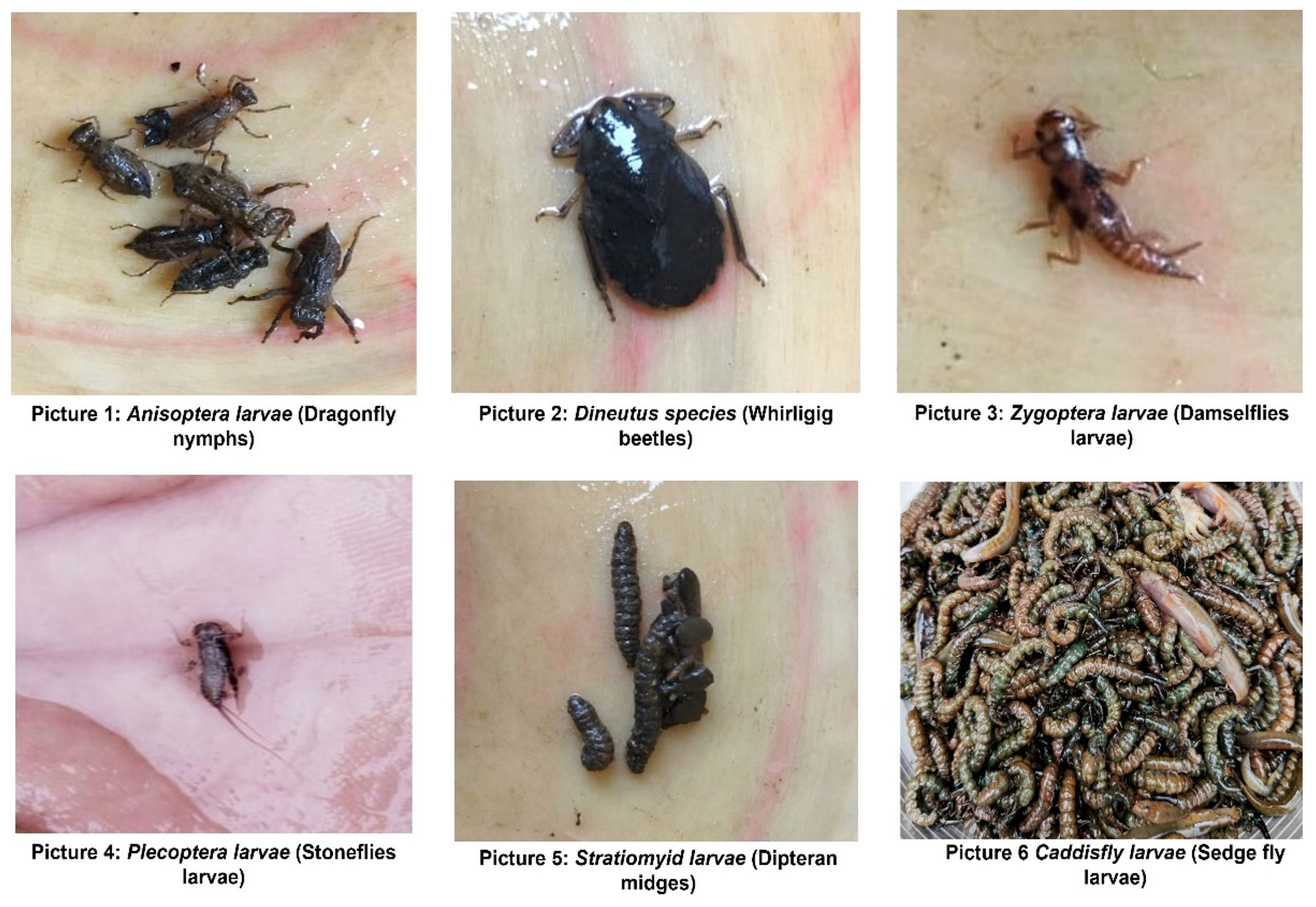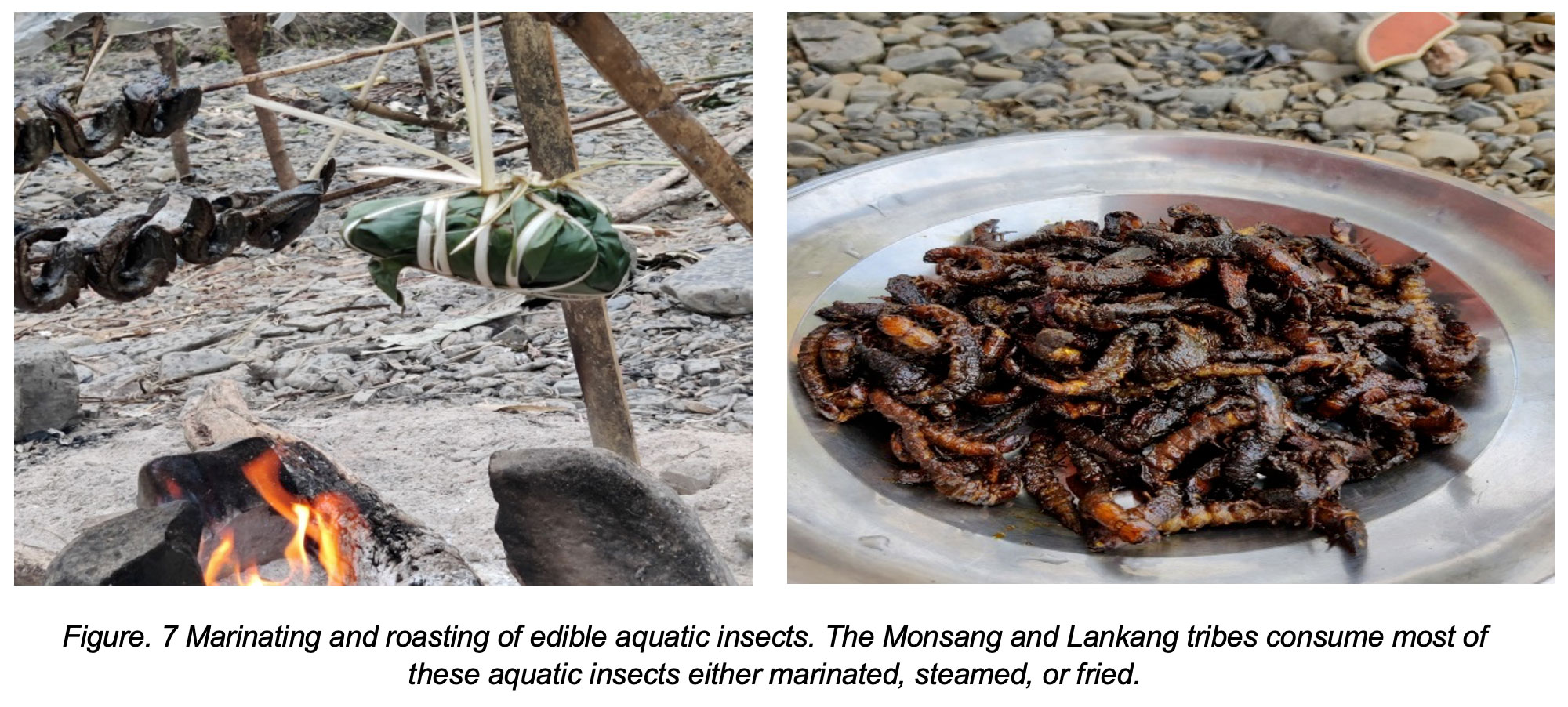Edible Aquatic Insects as Future Protein Sources: Challenges in Sustainable Utilization
Introduction:
Insects are considered an alternative protein source for human beings particularly in Asia (Japan, China, Thailand, India) Latin America (Mexico, Venezuela), and Africa. Entomophagy (practice of eating insects) depends upon insect palatability, taste, availability food taboo restrictions, local traditions, and religious customs. In India, the northeastern region is quite popular for the practice of eating insects, and it provides nutritional and cultural values of different ethnic groups since time immemorial. About 255 species of edible insects are reported from the Northeastern States of India and 69 edible insect species are recorded from Manipur.
We dived into the fascinating realm of the consumption habits of aquatic insects by riverine communities, namely, Monsang, Moyon, Lamkang, and Anal tribes of Chandel district, Manipur, located at the Chakpi River- one of the pilot sites of the NERAQ (Protection and Sustainable Management of Aquatic Resources in the Northeastern Himalayan Region of India) Project. We collected samples from the Chakpi river, and held a preliminary interview in four villages. This revealed that the local communities have the culture and practice of consuming a variety of aquatic insects. Some popular edible aquatic insects found in the area are Damselflies larvae locally known as Arvuumduka by the Monsang tribe and Dii-Kelmiktaak by the Lamkang tribe; Caddisfly larvae locally known as Lhungttrim in Monsang tribes and Tlingtlir in Lamkang Tribe; Dragonfly nymph short leg (Anisoptera larvae) locally known as Chiiphu by Monsang tribe and Harbuu- Kongkoi by Lamkang tribe; Dragonfly nymph long leg locally known as Arvuum in Monsang tribes and Dii – Khungtit in Lamkang Tribe; Tessaratomid bugs locally known as Chithambu in Monsang tribe and aquatic whirligig beetles locally known as Siki by Monsang tribe and Dii-Kotaam by Lamkang tribe, etc.

Traditional Ingenuity: Identification and collection of aquatic insects rely on traditional knowledge of the indigenous communities. These edible insects are generally sighted during the post-monsoon season and warm periods beneath the stones in river/stream beds. Local people including fishermen collect by gently sweeping and netting over aquatic vegetation or river shorelines through small mesh-size traditional hand nets, scoop nets, fishing nets, aquatic dip nets, tea strainer, etc., depending upon the target species. Local people can identify and differentiate edible varieties and poisonous insects through indigenous wisdom on the morphology of insects. Most aquatic insects are caught during the immature stage.

Value of aquatic insects:
Nutrition: Effective utilisation of insects can help in combating malnutrition and undernourishment by supplying insect protein. The average protein content in the edible insects is about 60%– with more than 50% essential amino acids which is quite higher than the animal meats. The glutamine amino acid content in edible aquatic insects is higher than that of edible terrestrial insects. It also has high content of minerals such as calcium, iron, and zinc as well as unsaturated Omega-3 fatty acids as compared to general meat.
Medicine: Aquatic insects have been valued not only as a source of protein but also as a folk medicine for treating human diseases since ancient times. In Manipur, the Monsang and Moyon tribes use Tessaratomid bugs (Chithambu in the local dialect of the Monsang tribe) to cure cough.
Fish meal: Wild fish consume aquatic insects as part of their natural diet. In recent years, the incorporation of aquatic insects and their larvae as fish meal ingredients in aquaculture feed has been widely observed. However, the knowledge and technology of rearing aquatic insects for both fishmeal and human consumption is very limited.
Environment: Fish feed or meal production from insect-based diets has a positive impact on the environment due to its low solid waste output (phosphorous and nitrogenous waste) as compared to conventional protein sources diets. Currently, the biomass of edible insects is harvested from the natural population, but farming techniques for this edible aquatic insect biomass have not been well developed. Hence, there may be a decline in the wild population of aquatic insects due to the over-harvesting of wild populations.
Challenges and sustainable utilisation:
With the rapid degradation of aquatic habitats, many edible aquatic insects have been either significantly lost or regionally extinct. Most aquatic insects for human consumption are collected from natural sources and their population is gradually diminishing due to environmental contamination. Aquatic insects are generally sensitive to pollution and have a higher risk of exposure to heavy metals and pesticide contaminants.
Although the consumption of aquatic insects is small in scale and their utilisation by indigenous tribal communities was greatly ignored, the prospects are unique and have great potential for utilisation and healthcare. Some of the insects are used for therapeutical purposes by the indigenous communities and are retained as folk medicines and much has not yet been fully explored and documented. Due to westernisation in marginal societies, there is a substantial loss in traditional practices of entomophagy and wisdom of utilisation resulting in the loss of traditional food culture and nutrient sources for locals.
Conclusion:
A systematic inventory of edible insects has not been undertaken so far and spells out as the need of the hour. Confirming the status of edible aquatic insects which are being consumed by indigenous communities in the Northeastern region of India may be explored for future nutritious resilient food. Research on edible aquatic insect need prioritisation and creating awareness in local communities on the nutritive value of insects for better utilisation and conservation of these insects is imperative. Sustainable harvesting practices of such resources need to be encouraged by local indigenous communities for a long-term supply of healthy, and culturally diverse resilient food options.
After all, the future of our planet may depend on it. So next time you think about protein, remember the humble aquatic insects. They might just be the future of our diets.
****
The author is an intern in the Indo-German Technical Cooperation project “Protection and Sustainable Management of Aquatic Resources in the Northeastern Himalayan Region of India (NERAQ)” funded by the German Federal Ministry for the Environment, Nature Conservation, Nuclear Safety and Consumer Protection (BMUV) under the International Climate Initiative (IKI).
Contact Person
Dr. Shaikhom Inaotombi
Key Buzzwords
Aquatic biodiversity, insects, protein, Manipur, Northeast India

